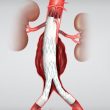01- Best Revascularization Strategy in Patients with Left Ventricular Deterioration Multivessel disease associated to ventricular function deterioration is challenging in terms of risk, when choosing a revascularization strategy. Read also HERE 02- SOLACI Renewed Authorities During the SOLACI-CACI 2021 Congress After a massive event attended by thousands of people, the Latin American Society of Interventional Cardiology renewed its authorities for<a href="https://solaci.org/en/2021/09/10/the-most-read-articles-in-august-in-interventional-cardiology/" title="Read more" >...</a>
HOST-EXAM: The Study that Challenges Aspirin as Long-Term Antiplatelet Therapy
The HOST-EXAM study (which was prospective, randomized, and open-label, with the participation of 37 Korean sites) was specifically designed to determine the role of aspirin as the long-term antiplatelet therapy of choice after angioplasty with current drug-eluting stents. To this end, the study compared aspirin head-to-head with clopidogrel. Over the course of four years, 5438 patients (mean<a href="https://solaci.org/en/2021/09/10/host-exam-the-study-that-challenges-aspirin-as-long-term-antiplatelet-therapy/" title="Read more" >...</a>
ESC 2021 | Empagliflozin in Heart Failure with Reduced and Preserved Ejection Fraction
The full results of the EMPEROR-Preserved study confirm as findings that empagliflozin decreases the risk of death or hospitalization for heart failure (HF) in both patients with reduced and with preserved function. The primary endpoint (a composite of death and hospitalization for HF) was reduced by 21% on a relative basis with sodium/glucose cotransporter 2<a href="https://solaci.org/en/2021/09/01/esc-2021-empagliflozin-in-heart-failure-with-reduced-and-preserved-ejection-fraction/" title="Read more" >...</a>
ESC 2021 | RIPCORD-2: Routine FFR Evaluation of All Epicardial Vessels During Angiography
The predecessor of this research—RIPCORD, published in 2014—showed that using fractional flow reserve (FFR) changes the treatment strategy in about 25% of patients. That marked the rise of FFR. In fact, the DEFER, FAME, and FAME 2 studies offered results consistent with the original RIPCORD. In this research, authors tested the hypothesis of systematic use of<a href="https://solaci.org/en/2021/09/01/esc-2021-ripcord-2-routine-ffr-evaluation-of-all-epicardial-vessels-during-angiography/" title="Read more" >...</a>
ESC 2021 | ISAR-REACT 5: Prasugrel Superior to Ticagrelor in ACS across Kidney Function Spectrum
When we have to choose between two potent P2Y12 receptor inhibitors for a patient undergoing ACS with a planned invasive strategy, kidney function should not interfere in this decision. The main findings of this study were that prasugrel has lower risk of all cause death, MI or stroke, and also had a similar risk of<a href="https://solaci.org/en/2021/08/31/esc-2021-isar-react-5-prasugrel-superior-to-ticagrelor-in-acs-across-kidney-function-spectrum/" title="Read more" >...</a>
ESC 2021 | ACST-2: CAS vs Endarterectomy in Asymptomatic Patients
The ACST-2 was designed to compare long-term outcomes of carotid artery stenting (CAS) vs carotid endarterectomy (CEA) in patients with asymptomatic stenosis. Prior to this study we had the German registry including 18,000 patients undergoing CAS and 86,000 receiving CEA between 2014 and 2019. At 30 days, disabling stroke rate was 0.7% for both strategies.<a href="https://solaci.org/en/2021/08/31/esc-2021-acst-2-cas-vs-endarterectomy-in-asymptomatic-patients/" title="Read more" >...</a>
ESC 2021 | MASTER DAPT: Dual Antiplatelet Therapy After Coronary Angioplasty in Patients at High Bleeding Risk
Courtesy of Dr. José Álvarez. In patients at high bleeding risk with drug-eluting stents, the duration of dual antiplatelet therapy has been subjected to ongoing review. Guidelines from the European Society of Cardiology (ESC) and the American College of Cardiology (ACC) suggest shortening this treatment to a maximum of three to six months (Class IIb).<a href="https://solaci.org/en/2021/08/31/esc-2021-master-dapt-dual-antiplatelet-therapy-after-coronary-angioplasty-in-patients-at-high-bleeding-risk/" title="Read more" >...</a>
Fenestrated Endografts as Treatment for Type I Endoleak: What is the Price of Success?
Both fenestrated and branched endografts are effective to treat patients after failure of their initial endograft due to significant type I endoleak. This situation is costly both because of the devices themselves, and also due to the several endovascular and surgical procedures required. Failure of an endograft to treat an infrarenal abdominal aortic aneurysm due to<a href="https://solaci.org/en/2021/08/27/fenestrated-endografts-as-treatment-for-type-i-endoleak-what-is-the-price-of-success/" title="Read more" >...</a>
The Most Read Articles in Interventional Cardiology of July
01- Novel DES Technology Promises to Become the Next DES Generation The novel technology of drug-eluting stent Supreme was designed to synchronize antiproliferative drug release and leave a base behind to promote healing. Read more HERE 02- The Fellow’s Corner | 3rd Clinical Case: True Bifurcation Lesion: Which Strategy Should We Use? Here is the third Fellow’s<a href="https://solaci.org/en/2021/08/25/the-most-read-articles-in-interventional-cardiology-of-july/" title="Read more" >...</a>
Complete Revascularization after Pharmacoinvasive Strategy
Patients initially receiving pharmacoinvasive strategy for ST elevation myocardial infarction (STEMI) also presenting multivessel disease consistently benefit from complete revascularization. This benefit is similar to that of primary PCI. The COMPLETE showed that staged non-culprit lesion percutaneous coronary intervention (PCI) reduced major cardiovascular events in STEMI patients with multivessel coronary artery disease. This benefit was<a href="https://solaci.org/en/2021/08/25/complete-revascularization-after-pharmacoinvasive-strategy/" title="Read more" >...</a>









